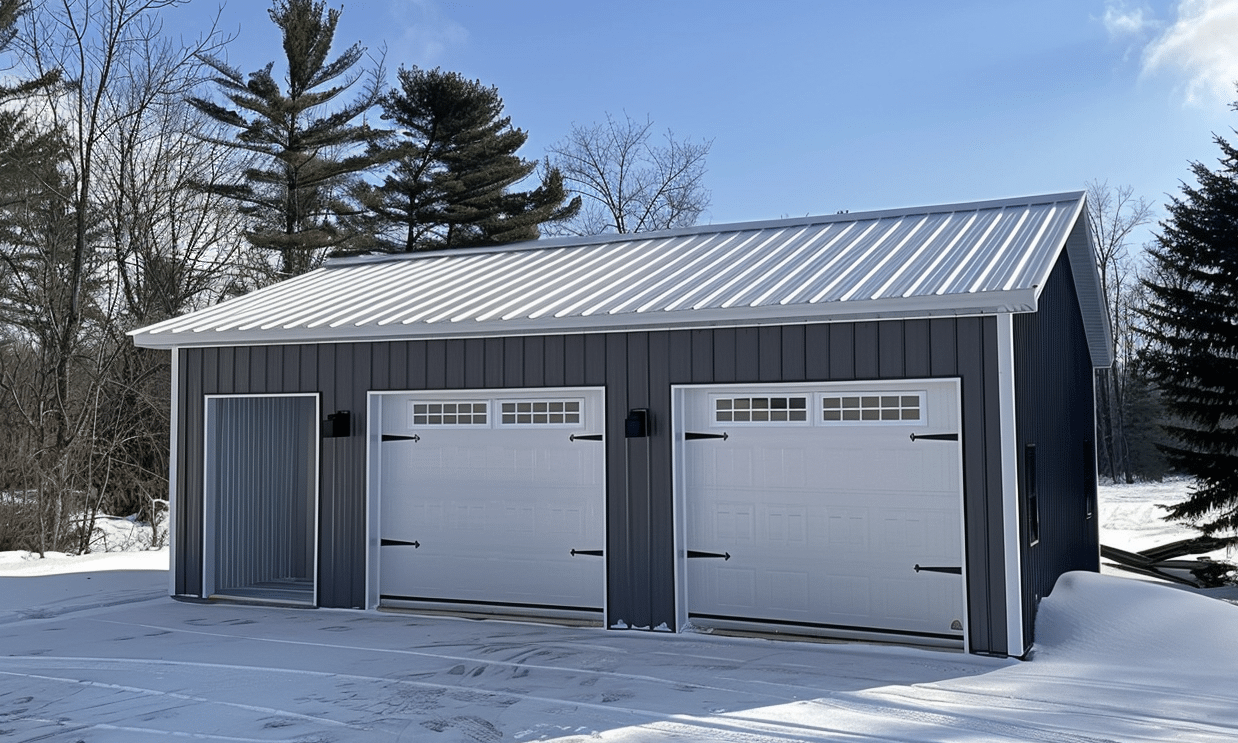The winds of change are sweeping through industrial facility construction, with sustainability emerging as the guiding star for modern practices. Today, it’s not just about building big; it’s about building smart and green. But what do sustainable practices in industrial construction entail, and why are they so significant in our ever-evolving world?
In the rapidly developing landscape of industrial facility construction, prioritizing sustainable methods is essential. If you’re embarking on a new construction venture, you might wonder: Why is there such a drive towards sustainability? It’s akin to the difference between merely surviving and truly thriving; sustainability ensures that facilities remain functional and efficient while minimizing environmental harm. In this article, we’ll unwrap sustainable industrial facility construction and discover how these practices are molding an eco-friendly future.
Sustainability in Industrial Construction: More Than Just a Trend
Sustainable industrial facility construction is not a passing fad. It is a necessity born from the need to reduce our carbon footprint and ensure the longevity of resources. With industries contributing significantly to pollution and resource depletion, adopting sustainable practices is pivotal for companies aiming to align with global environmental goals. But what exactly do these sustainable practices encompass?
1. Green Building Materials
Selecting eco-friendly materials is one of the foundational steps in sustainable construction. These materials, such as recycled steel and low-carbon concrete, not only reduce environmental impact but also improve the lifespan and efficiency of buildings. Using metal buildings is an excellent example, as they provide durability and are recyclable, minimizing waste.
2. Energy Efficiency and Water Conservation
Energy efficiency is a cornerstone of industrial sustainability. Innovations in design and technology have paved the way for facilities that consume less energy while enhancing productivity. Implementing energy-saving measures, such as solar panels and LED lighting, significantly lowers utility costs and greenhouse gas emissions. Alongside energy conservation, water efficiency should be prioritized, integrating systems like rainwater harvesting and water-efficient plumbing fixtures.

3. Sustainable Design and Construction Practices
Design plays a crucial role in ensuring industrial facility sustainability. Employing smart, sustainable designs that optimize natural light and ventilation can lead to significant reductions in energy use. Moreover, constructing with a focus on minimizing waste and disruption can further enhance sustainability. Partnerships with Commercial Builders experienced in sustainable methods can ensure that these principles are effectively integrated.
Exploring Innovative Solutions in Sustainable Construction
Sustainable construction extends beyond traditional methods, inviting innovative solutions that seem almost futuristic. Technologies like Building Information Modeling (BIM) enable precise planning and resource management, reducing waste and inefficiencies.
1. Adoption of Green Roofs
One innovative practice gaining momentum is the use of Green roofs in commercial construction. These installations offer excellent insulation, reduce stormwater runoff, and contribute to biodiversity.
2. Embracing Industrial Sustainability & Efficiency
Industries are now expanding their horizons, embracing a holistic approach to sustainability known as Industrial Sustainability & Efficiency. This approach integrates energy conservation, resource management, and sustainable business practices, resulting in enhanced efficiency and reduced environmental impact.
The Future is Green: Navigating the Path Ahead
As the narrative shifts aggressively towards sustainability, the architects and builders of today are tasked with creating the eco-friendly industrial facilities of tomorrow. But what does this mean for the future of industrial facility construction?
1. The Rise of Smart Facilities
The future is undoubtedly digital. Intelligent systems using IoT (Internet of Things) and advanced analytics can monitor and optimize resource use, predict maintenance needs, and enhance facility management. These smart solutions promise not only environmental benefits but economic gains as well, making them invaluable for future industrial projects.
2. Incentives and Policies Driving Change
Governments worldwide are incentivizing sustainable practices through policies and grants, urging industries to adopt eco-friendly methods. By offering financial incentives and imposing stricter environmental regulations, the transition towards sustainable industrial facility construction is accelerating.
By integrating sustainable strategies, the lifespan of an industrial facility can be significantly extended, while its environmental impact is greatly curtailed. It’s like nurturing a robust tree whose benefits are enjoyed by generations yet to come.
Ultimately, sustainable industrial facility construction is about crafting a harmonious balance—a balance where industry and nature coexist peacefully. As we continue to witness the benefits of sustainable practices, the momentum towards a greener and more sustainable future will undoubtedly forge ahead. Are you ready to be part of this transformative journey?
In conclusion, sustainable practices in industrial construction offer more than just environmental benefits—they represent an investment into a healthier, efficient, and economically viable future. As industries pivot toward sustainability, the role of thoughtful construction practices will only grow more significant. Embrace these changes, and you’ll discover a world of opportunity beyond the mere bricks and mortar.










